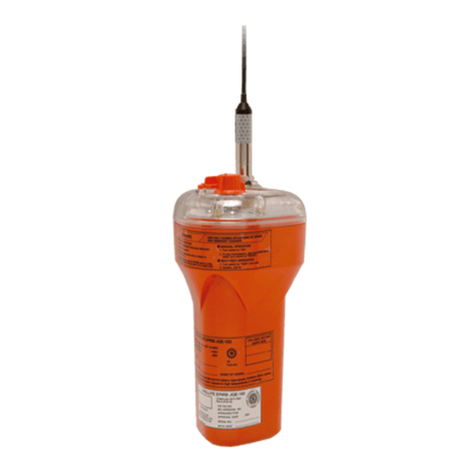
Contents
Preface ............................................................................................................................................ ⅰ
Before use ....................................................................................................................................... ⅱ
The cautions on use ........................................................................................................................ ⅲ
JCX-161 Bridge Navigational Watch Alarm System External Appearance .................................. vii
Chapter 1 General Outline of Equipment ........................................................................................... 1
1.1 Functions .................................................................................................................................... 1
1.1.1 Purpose of the system ......................................................................................................... 1
1.1.2 Operation modes.................................................................................................................. 1
1.1.3 Operation sequence of displays and alarms ....................................................................... 2
1.2 Features...................................................................................................................................... 3
1.2.1 Versatile functions with standard configuration ................................................................... 3
1.2.2 Various reset devices and number of inputs........................................................................ 3
1.2.3 Output to external equipment .............................................................................................. 3
1.2.4 Remote maintenance function............................................................................................. 3
1.3 Configuration .............................................................................................................................. 4
1.4 Outline dimensions ..................................................................................................................... 5
1.4.1 Control unit (NCK-175) ........................................................................................................ 5
1.4.2 LCD display unit (NWZ-4650).............................................................................................. 6
1.4.3 Buzzer unit (NVS-785)......................................................................................................... 7
1.4.4 Reset button unit (NCJ-895) ................................................................................................ 8
1.4.5 Motion sensor (NYG-5) (Option).......................................................................................... 9
1.4.6 LED Warning lamp unit (NCD-2257) (Option) ................................................................... 10
1.4.7 Reset button unit (Waterproof) (NCJ-896) (Option) ...........................................................11
1.5 System diagram........................................................................................................................ 12
Chapter 2 Names and Functions of System Components ............................................................. 13
2.1 Power switch and how to turn it on........................................................................................... 13
2.2 LCD Display unit (NWZ-4650).................................................................................................. 16
2.2.1 Mark and function of button ............................................................................................... 16
2.2.2 Display and function of screen........................................................................................... 18
2.2.3 Display of each alarm stage............................................................................................... 19
2.3 Buzzer unit (NVS-785).............................................................................................................. 21
2.3.1 Names and functions of system components.................................................................... 21
2.4 Reset button unit (NCJ-895)..................................................................................................... 22
2.4.1 Names and functions of system components.................................................................... 22
2.5 Motion sensor (NYG-5) (Option device)................................................................................... 25
2.5.1 Names and functions of system components.................................................................... 25
2.6 LED Warning lamp unit (NCD-2257) (Option device) .............................................................. 28
2.6.1 Names and functions of system components.................................................................... 28
2.7 Reset button unit (Waterproof) (NCJ-896) ............................................................................... 30





























